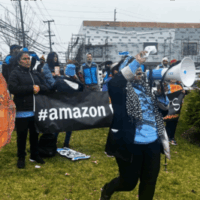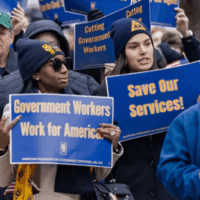OSHA Fatality-Related Investigations at 10-Year High
Washington, D.C.—Workplace fatality investigations are at decade-high levels under the Trump administration, at the same time that worksite safety enforcement by the administration’s Occupational Safety and Health Administration is steadily declining, according to an analysis of recent government data released today by the National Employment Law Project. The data also revealed that OSHA now has the lowest number of health and safety inspectors in the agency’s 48-year history.
The number of OSHA investigations following a work-related fatality or catastrophe reached a 10-year high, climbing to 929 investigations in FY 2018, up almost 100 from the previous year. This is the single-largest increase in such investigations in a decade.
“The latest data from OSHA is very alarming,” said Debbie Berkowitz, NELP’s program director for worker health and safety, and a former senior official with OSHA. “We’re seeing huge red flags in the continued drop in enforcement and staffing at OSHA, while the number of workplace fatality investigations is at a decade high. That’s a clear indication that workplace deaths are on the rise.”
The data show that since the beginning of the Trump administration, OSHA enforcement activity has been in a steady decline. On the surface, OSHA reports a similar number of investigations over the past two years, but upon closer examination, it becomes clear that this is a false narrative and that the agency is prioritizing quantity over quality, in an effort to disguise what is really going on, according to Berkowitz.
In FY 2016 (last full year of the Obama administration), OSHA reported a total of 42,900 enforcement units as their measure of enforcement activity. In FY 2018, that figure went down to approximately 41,500 enforcement units. The agency’s reduction in enforcement is largely the result of cutbacks in the number of complicated, high-impact safety and health inspections. According to OSHA’s own data, the agency has:
- Conducted one-third the number of inspections involving hazards causing musculoskeletal disorders, even though these painful and often crippling conditions are the number-one work-related illness in the country;
- Reduced by half the number of inspections regarding heat stress, even though last year was one of the hottest years on record;
- Reduced by one-third the number of inspections where investigators measure individual workers’ levels of chemicals and other toxic agents; and
- Cut by half the number of high-penalty cases.
The report notes that the lack of staffing at OSHA is not due to budget cuts, but to agency delays in hiring. This has consequences for worker safety, said Berkowitz. In addition to the precipitous rise in work-related fatality investigations, the lack of inspectors at the agency means that workplaces with multiple cases of severe injuries are not receiving on-site inspections. Further, OSHA has all but stopped publicizing its enforcement activity—abandoning the deterrent effect that this kind of publicity produces.
“The Trump administration is cutting back on OSHA enforcement activity, putting workers’ lives at risk and undercutting businesses that play by the rules and prioritize worker safety,” said Berkowitz. “That’s a far cry from putting workers first.”
The reduction in worker safety enforcement is part of a broader pattern of rollbacks in enforcement of consumer and worker protections throughout the administration. Recent reports highlight the dramatic decline in enforcement of consumer protections by the Consumer Financial Protection Bureau, the Consumer Product Safety Commission, and the Federal Trade Commission, as well as an alarming drop in inspections by the Environmental Protection Agency.
READ THE REPORT:
Workplace Safety Enforcement Continues to Decline in Trump Administration
Related to
The Latest News
All newsMayor Bowser & D.C. Council Must Respect the Will of D.C. Voters by Rejecting Repeal of Initiative 82

Blog
New Brief Sheds Light on the Amazon’s Dangerous ‘Flex’ Labor Model

News Release
NELP Denounces Supreme Court Ruling Permitting Immediate Layoffs of Hundreds of Thousands of Federal Workers

News Release
